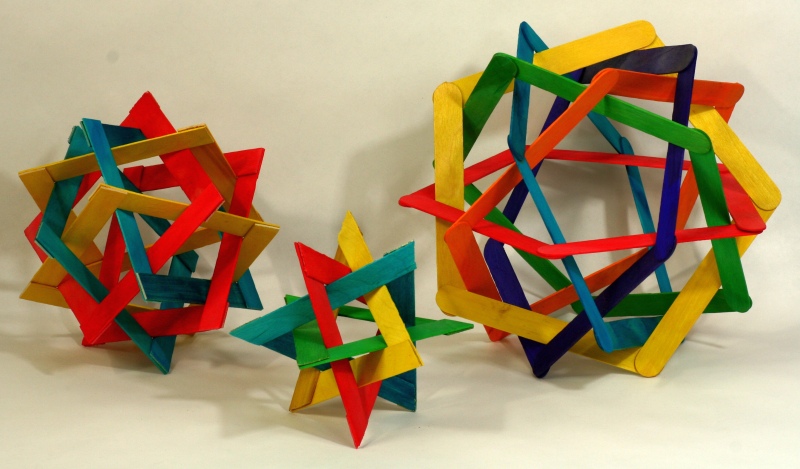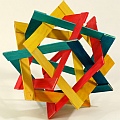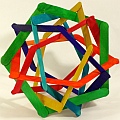
These three beautiful constructions are
challenging assembly puzzles. Their apparent simplicity is
deceiving and they will stretch the visualization and
problem-solving skills of your students.
Each structure derives from a familiar regular polyhedron---the
tetrahedron, cube, and dodecahedron, respectively---yet the
faces join together in a surprising way. Instead of
connecting edge-to-edge as polyhedral faces do, these polygons
lock together by "linking elbows" in a symmetric
entanglement. Once they are built and handled for a while,
their internal logic becomes clearer and they help students
appreciate the richness of the structures to be found in the
mathematical world.




